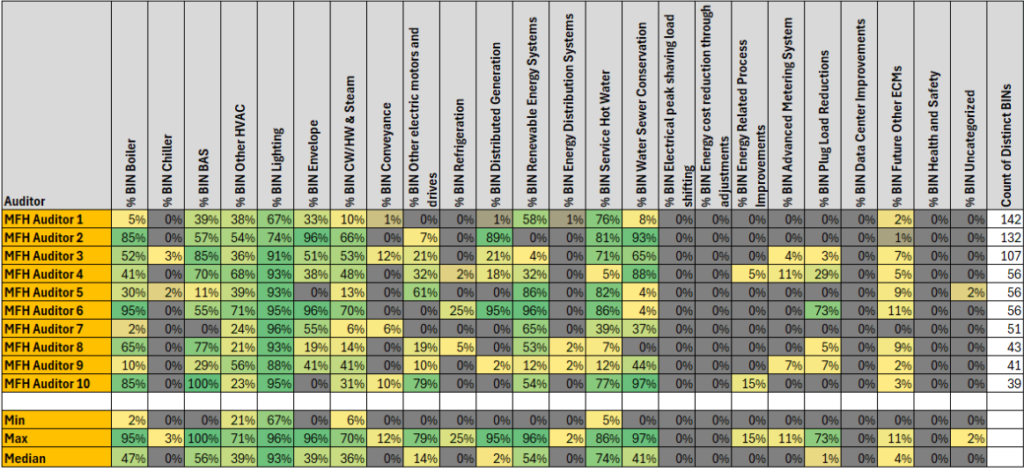By Duncan Prahl
Duncan Prahl, CUNY BPL Director of Technical Services, recently completed a research study that aggregated and analyzed historical energy, audit, and permitting data to evaluate trends and forecast impacts of Local Law 97 on NYC building stock. The project was funded by the US Department of Energy and the NYC Department of Citywide Administrative Services Division of Energy Management and was conducted with the cooperation of the Mayor’s Office of Climate and Environmental Justice and the NYC Department of Buildings. Study results were presented over the summer at the 26th Annual Westford Symposium on Building Science and will be presented again through the DOE Building Energy Code Webinar Series on January 16, 2025.
Register HERE to participate.
Clear Correlation Between Newer Energy Codes and Energy Efficiency for Multifamily Buildings
Multifamily buildings built according to the 2014 NYC Energy Conservation Codes had a median EUI that was 33% lower than pre-energy code era buildings (prior to 1979). However, results for building types other than Multifamily housing use type showed little correlation between building vintage and EUI. These results are not necessarily reflective of the effectiveness of the energy code compliance per se, in that the EUI includes all energy use in the building, not just those regulated by the energy code.
Analysis of Benchmarking Data and Local Law 97 (LL97) Compliance
Buildings issued permits after 2015 were analyzed using 2022 energy consumption and GHG emissions from Local Law 84 benchmarking data. A total of 281 buildings were analyzed, across a range of use types; 7% were found not to comply with the 2024-2029 LL97 emission limits, and 47% were not in compliance with the 2030-2034 limits.
Relationship Between Buildings EUI and Recommended Measures
CUNY BPL analyzed audit data exported from the US Department of Energy (US DOE) Audit Template website. Data and recommended measures from audits were evaluated against the EUI quartile corresponding to each building. Despite significant differences among the measure categories, the dataset provides little evidence to suggest that the measures being recommended are factoring in the EUI of the building. Further, the wide variation in the percentages of energy efficiency measure recommendations between the Multifamily Housing and Office use types suggest the presence of bias related to measure selection by audit companies.
The figure below shows the percentage of measure categories recommended by auditors for Multifamily buildings. In some cases, like lighting, the recommendations are reasonably distributed across audit companies (ranging from 67% to 96%). In other categories, like boilers, there is a wider variation in the number of times the measure was recommended (ranging from 2% to 95%) among the different audit companies.

LL97 Penalties for Multifamily and Office Buildings
The value of the aggregate penalties for the buildings analyzed (Office, Hotel, and Multifamily Housing use types) was over $32 million dollars for the 2024-2029 compliance period and over $379 million dollars for the 2030-2034 compliance periods.
The table below shows the range and percent distribution of potential LL97 penalty amount per square foot for Multifamily Housing and Office use types. The table is divided by the 2024-2029 and 2030-2034 compliance periods and is based on 2022 reported energy and square footage data.
